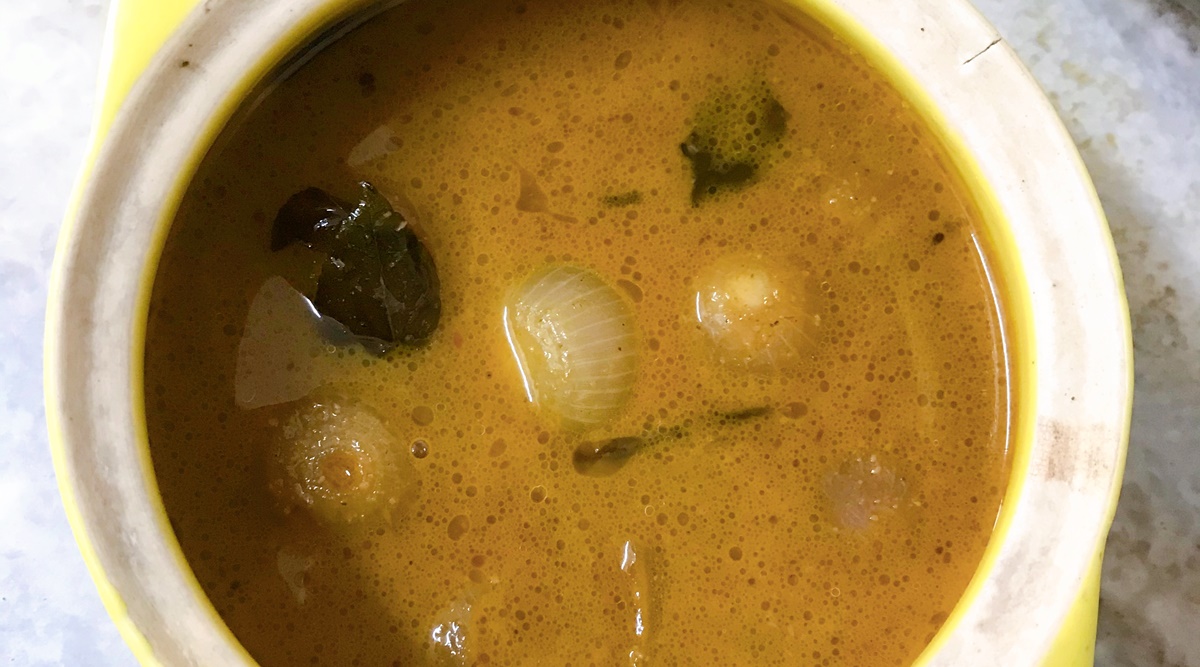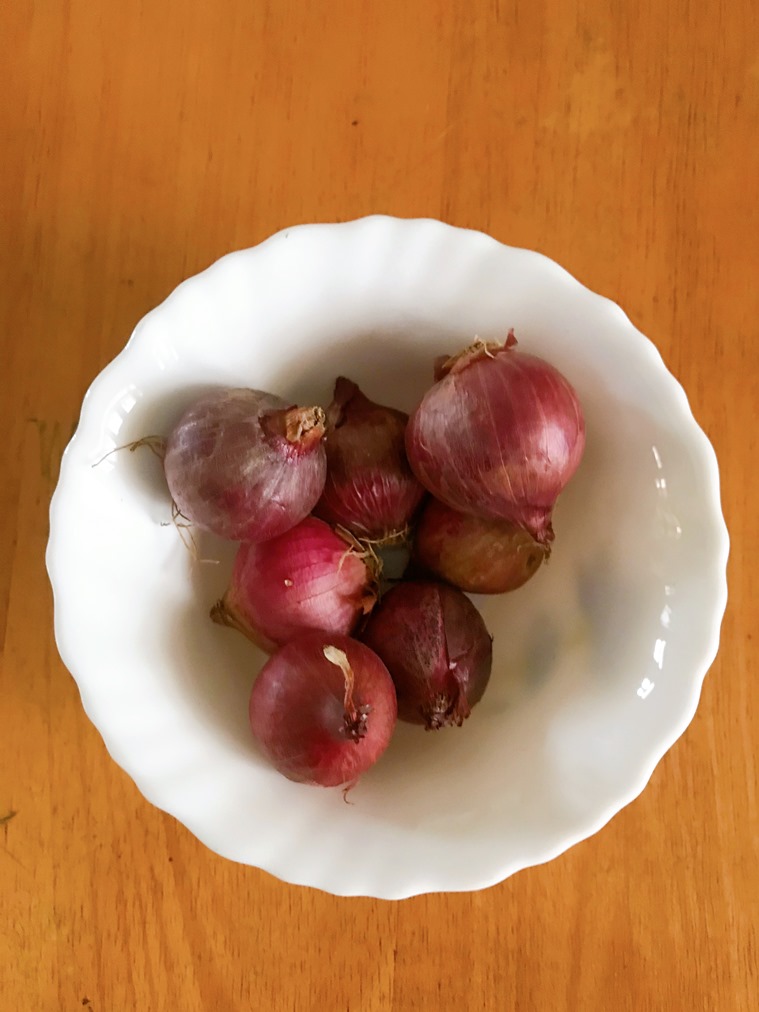 Make this interesting recipe. (Source: Pooja Pillai)
Make this interesting recipe. (Source: Pooja Pillai)The bag of shallots I bought for my Onasadhya is like the Cornucopia – it just doesn’t seem to get empty. Luckily, I like shallots and I know more than one way in which to use them, one of these being ulli theeyal. This is a tamarind-based curry which can be made with other vegetables, too, like ladies fingers, drumsticks, elephant foot yam or a combination of these. But ulli theeyal is my favourite because of the contrast between the sourness from the tamarind and the sweetness from a soft, well-cooked shallot.
A coconut masala paste is, of course, a key component of this dish. Grated coconut is fried or dry roasted with spices and then ground to a fine paste. In fact, it’s very similar to the pulinkari and, based on what I’ve read, in some parts of Kerala, the terms theeyal and pulinkari are used interchangeably. However, in theeyal, as I make it, there’s heat from red chillies and from whole black peppercorns. The latter are not used in the pulinkari masala paste.
If you cook Kerala food regularly, this is one of the things you’ll observe: how deducting or adding just one ingredient can turn one thing into a whole other thing. The differences are that subtle, but if you pay attention, you can taste them.
Ingredients:
Shallots, peeled – 1 cup
Thick tamarind paste – ½ cup
Turmeric powder – ½ tsp
Jaggery powder (optional) – 1 tbsp
Mustard seeds – 1 tsp
Curry leaves – 1 sprig
Coconut oil – 1 tbsp
Salt, to taste
 Theeyal can also be made with ladies fingers, drumsticks and elephant foot yam. (Photo: Pooja Pillai)
Theeyal can also be made with ladies fingers, drumsticks and elephant foot yam. (Photo: Pooja Pillai)
For masala paste:
Freshly grated coconut – 1 cup
Coriander seeds – 1 tbsp
Cumin seeds – 1 tsp
Black peppercorns – 2 tsp
Fenugreek seeds – ½ tsp
Dried red chillies – 2-3
Method:
In a wok, heat half the coconut oil over medium flame. Add all the ingredients for the masala paste, except the coconut. Once the seeds start to pop, add the coconut and, reducing the flame to low, fry till it’s golden and aromatic.
Once the masala has cooled down, grind it to a fine paste with a little water.
Heat the rest of the oil and fry the shallots till they start to brown.
Add the turmeric, followed by tamarind paste, diluted with about a cup of water. You may need to add more water, if it’s too thick. Add the salt and, turning up the heat, allow the shallots to boil in the tamarind water till they turn soft.
At this point, stir in the coconut masala paste and, reducing the flame to medium, allow the curry to simmer for about 10 minutes till the masala is properly cooked.
You may add the jaggery at this point, if you want to. Be very careful about the quantity, because this curry is not meant to be sweet at all.
You’re only using the jaggery to balance out any excess sourness from the tamarind.
Turn off the flame, and temper the curry with mustard seeds and curry leaves popped in coconut oil
Serve hot with rice, ghee and pappadam or with a dry side dish.
Note:
Usually, shallots are not chopped for this recipe, since part of the joy of eating this comes from being able to bite into a whole, soft and sweet shallot in a tangy, tamarind curry base. But if the shallots are too big, then you may halve or quarter them.
[The Back Burner is a weekly blog that will talk about all things food (with recipes, of course)]
For more lifestyle news, follow us: Twitter: lifestyle_ie | Facebook: IE Lifestyle | Instagram: ie_lifestyle